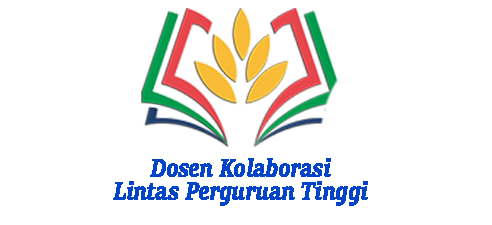The Contribution of al-'Ilm Sharaf To the Development of Understanding Classical Arabic Grammar at Islamic Educational Institutions
DOI:
https://doi.org/10.54621/jiaf.v13i1.876Keywords:
Contribution, al-'Ilm Sharaf, Classical Arabic, Islamic Educational InstitutionsAbstract
This study examines the contribution of al-'Ilm Sharaf to the development of understanding classical Arabic grammar in Islamic educational institutions. Al-'Ilm Sharaf is a key branch of Arabic grammar that focuses on word formation and meaning through the manipulation of root letters. Although this subject has been integrated into the curriculum, there is still a gap between theoretical knowledge and its practical application. This research employs a library research method to gather data from various relevant written sources. The findings show that students often struggle to apply the theoretical aspects of Arabic morphology when analyzing classical texts, and al-'Ilm Sharaf instruction requires a more interactive and practice-based approach. Therefore, this study offers valuable insights into how teaching methods and materials can be improved to enhance students' comprehension of classical Arabic grammar.
References
Al-Lahim, Ibrahim. 2024. “Morphology and Derivation in Perspective of the Development of the Concept’s Conjugation in Linguistics: A New Linguistic Reading.” Scientific Journal of King Faisal University: Humanities and Management Sciences 34–40. doi: 10.37575/h/lng/240023.
Ardiansyah, Ade Arip, and Azhar Muhammad. 2020. “Implementation of Integrative Arabic Grammar (Nahwu & Sharaf) Curriculum in Islamic Boarding School.” Izdihar : Journal of Arabic Language Teaching, Linguistics, and Literature 3(3):211–28. doi: 10.22219/jiz.v3i3.13264.
Asaad, Hani Qasem Mohammed. 2024. “The Role of Morphological Awareness in L2 Postgraduates’ Academic Writing: Is Vocabulary Knowledge a Mediating Variable?” Cogent Education 11(1). doi: 10.1080/2331186X.2024.2327787.
Faedurrohman, Faedurrohman, Agung Muttaqien, and Muhammad Afthon Ulin Nuha. 2023. “مشكلات تعليم الصرف وحلولها للمبتدئين.” Kalimatuna: Journal of Arabic Research 2(1):105–18. doi: 10.15408/kjar.v2i1.34204.
Hafidah, Hafidah, Rohmatun Lukluk Isnaini, and Muhammad Nur Kholis. 2024. “Investigating Active Learning Model For Arabic Grammar Lectures.” Ijaz Arabi Journal of Arabic Learning 7(2):644–53. doi: 10.18860/ijazarabi.v7i2.25175.
Hanum, Salwa. 2023. “AnalisisKorelasi Antara Ilmu Sharaf Dan Kemampuan Berbicara Bahasa ArabDengan Alumni Dayah Terpadu Aceh.” Jurnal Seumubeuet: Jurnal Pendidikan Islam VOLUME: 2|:2–10.
Hastang, Hastang, and Ahmad R. 2023. “Analysis of Arabic Language Learning Difficulties Among Students in the Qawaid Al-Lughah Al-Arabiyyah Materials.” Didaktika : Jurnal Kependidikan 17(1):31–42. doi: 10.30863/didaktika.v17i1.5052.
Ibrahim Al-Zuhairy, Mahmud Ismail. 2023. “Grammatical Analysis In Arabic Language.” Alatoo Academic Studies 23(2):322–29. doi: 10.17015/aas.2023.232.31.
Jakubenko, Oksana V., Vadim V. Astashov, Oleg A. Zayko, Svetlana V. Klochkova, and Mayas Arnous. 2024. “Innovative Pedagogical Technologies in the Modernized Teaching of Morphological Disciplines.” Morphology 162(1):96–101. doi: 10.17816/morph.630181.
Khoerudin, Asep Rizal. 2024. “The Importance of Arabic in Quran Study: Enhancing Understanding Through Native Language Learning.” Tadris Al-’Arabiyyah: Jurnal Pendidikan Bahasa Arab Dan Kebahasaaraban 3(1):13–28. doi: 10.15575/ta.v3i1.34496.
Kim, Bo-Ok, and Kyong-Hahn Kim. 2022. “A Study on the Appropriateness of Elementary English Textbooks for School Education from the Perspective of Subject-Matter Education.” The English Teachers Association in Korea 28(4):67–88. doi: 10.35828/etak.2022.28.4.67.
Movitaria, Mega Adyna, Teungku Amiruddin, Ade Putra Ode Amane, Muhammad Munir, and Qurnia Indah Permata Sari. 2024. Metodologi Penelitian. Pasaman Barat: CV. Afasa Pustaka.
Mulyanto, Dedi, Muhammad Zaky, and Arsyad Muhammad Ali Ridho. 2024. “استخدام الذكاء الاصطناعي لتطوير مهارات اللغة العربية في تعلمها.” An-Nidzam : Jurnal Manajemen Pendidikan Dan Studi Islam 11(1):18–32. doi: 10.33507/an-nidzam.v11i1.1940.
Rusli, Tiffany Shahnaz;, and Dahlia; Amiruddin Boari, Yoseb; Amelia. 2024. Pengantar Metodologi Pengabdian Masyarakat. Pidie: Yayasan Penerbit Muhammad Zaini.
Sirignano, Rosanna. 2022. “La Grammatica Araba: Scienza Sacra e Chiave per l’esegesi Coranica.” Doctor Virtualis (17):237–59. doi: 10.54103/2035-7362/17857.
Sugiyono. 2012. Metode Penelitian Kuantitatif. Bandung: Alfabeta.
Published
How to Cite
Issue
Section
Copyright (c) 2024 Nurbaiti Nurbaiti

This work is licensed under a Creative Commons Attribution-ShareAlike 4.0 International License.












